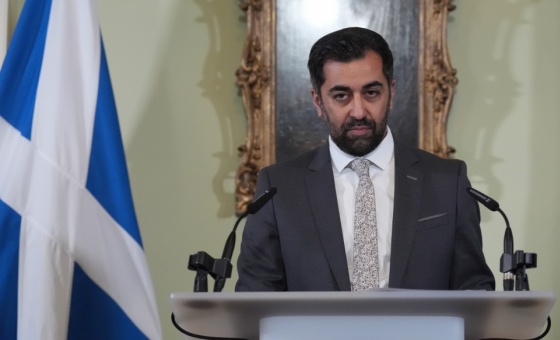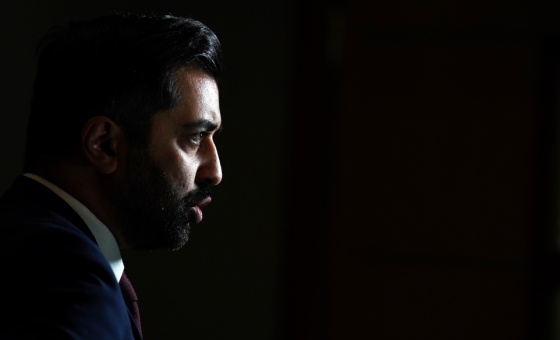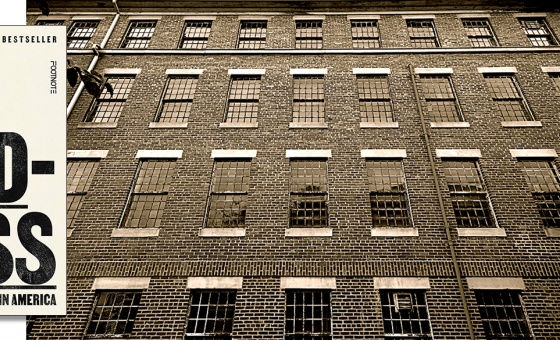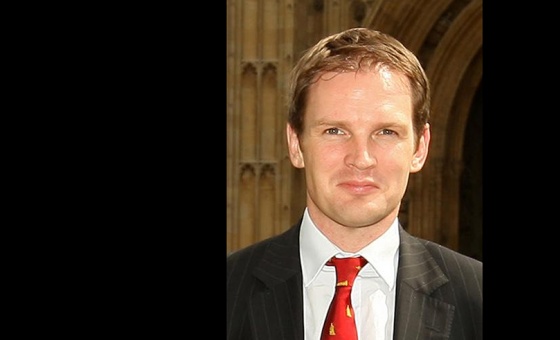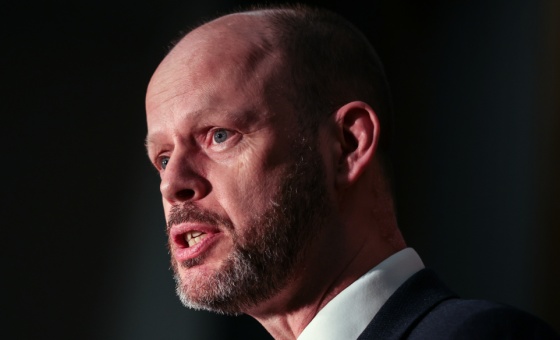This is the last article you can read this month
You can read more article this month
You can read more articles this month
Sorry your limit is up for this month
Reset on:
Please help support the Morning Star by subscribing here
ONE HUNDRED years ago yesterday, on Friday January 31 1919 — just 82 days after the end of World War I — more than 60,000 Glasgow workers gathered in George Square to support the strike for a 40-hour working week and to hear the Lord Provost’s reply to the workers’ demand. The workers flew a red flag over the city.
The strike had come about after just a few weeks of peace after the armistice in November of the previous year.
It was widely feared that the end of the war would be followed by widespread unemployment due to the re-entry of large numbers of demobilised soldiers and seamen into the workforce.
Glasgow was expected to be particularly badly hit because a large proportion of its workforce was employed in war-related heavy industries such as munitions and shipbuilding.
For instance, Glasgow produced over 80 per cent of Britain’s armour plate for tanks, big guns and warships.
The Clyde Workers’ Committee (CWC) — an informal rank-and-file body made up of shop stewards from different trade unions — proposed a campaign to limit working-hours to 30 hours per week to better share out what work there was.
Perhaps not surprisingly, this demand was watered down to 40 hours per week after the less militant Glasgow Trades Council became involved.
In January 1919, the CWC and the trades council launched a mass strike in support of the demand for that 40-hour working week. The strike began on Monday January 27, with a meeting of around 3,000 workers held at St Andrew’s Hall.
The wartime coalition government, led by Britain’s last Liberal prime minister David Lloyd George, panicked and greatly overreacted to the strike.
Fearing what had happened in Russia in 1917, they were convinced this strike was the precursor of a Bolshevik revolution on Clydeside.
Indeed at a Cabinet meeting the Scottish secretary Robert Munro stated: “It is a misnomer to call the situation in Glasgow a strike — this is a Bolshevist uprising.”
They lost no time in dispatching British — mainly English — troops along with tanks to Glasgow to put down what they saw as a serious insurrection. The Glasgow police were also briefed on how serious was the threat.
At least six Medium Mark C Hornet tanks were deployed against the strikers in Glasgow. The order to rush these tanks to Glasgow from Bovington in Dorset was given by Winston Churchill, then the secretary of state for war.
An estimated 10,000 English troops in total were sent to Glasgow in the immediate aftermath of the Battle of George Square.
This was in spite of a full battalion of Scottish soldiers being stationed at Maryhill barracks in Glasgow at the time.
No Scottish troops were deployed, with the government fearing that fellow Scots, soldiers or otherwise, would go over to the workers’ side if a revolutionary situation developed in Glasgow.
With all this military backing it was no surprise that, with so many workers assembled at George Square, the police waited until a deputation of the strike leaders went inside to speak with the lord provost and then mounted a vicious and unprovoked attack on the demonstrators outside.
Unarmed men and women were knocked to the floor by overenthusiastic truncheon-wielding police.
Many of the strikers were ex-servicemen just back from the horror of war in the trenches and they led the fightback, matching police truncheons and staves with fists, iron railings and broken bottles. They forced the police to retreat.
On hearing the noise from the square outside, the strike leaders, who were meeting with the lord provost, rushed outside to see what was happening.
One of the leaders, David Kirkwood, was knocked to the ground by a police baton, and Willie Gallacher, who would later become a communist MP, was arrested by the police.
After the initial confrontation between the demonstrators and the police, further fighting continued in and around the city centre streets for many hours.
Many of the strikers had regrouped on Glasgow Green the initial police charge. Here, and in many other parts of the city, running battles between police and workers continued.
As the dispute went on sympathy strikes started among local power station workers and miners from the nearby coalfields. The rapid growth of the action was credited to flying pickets — one of the first uses of this strategy. Most of these flying pickets were recently discharged servicemen.
This was Scotland’s most widespread strike for almost 100 years. The last dispute on this scale had been prompted by the end of the Napoleonic wars.
Was it a revolution? No. In fact revolution was probably the furthest thing from the minds of most of the trade union leaders of the day.
Later Gallacher would claim that the workers should have marched to the Glasgow army barracks and encouraged the Scottish troops there to leave them and join the strike against the government. Sadly that was not to be.
Nevertheless the government instructed that the union leaders of the strike be arrested and charged with instigating and inciting large crowds of persons to form part of a riotous mob.
In the immediate aftermath of Bloody Friday, as it became known, other leaders of the CWC were also arrested, including Manny Shinwell, Harry Hopkins and George Edbury. Gallacher was sent back to jail for five months. Shinwell got three months.
Despite being jailed for their part in the dispute, many of the union activists involved went on to make important contributions to British politics in future years.
Gallacher became one of three communists to be elected to the House of Commons, representing West Fife between 1935 and 1950.
Kirkwood served as a Labour MP from 1922 to 1951, later taking a seat as a Labour peer.
Shinwell became an MP in 1922 and served as a minister under Ramsay MacDonald and Clement Attlee, but refusing a position in Winston Churchill’s wartime coalition. He became Baron Shinwell of Easington in 1970 and died in 1986, aged 101.
On February 10 1919 the 40-hours strike was called off by the joint strike committee. While not achieving a 40-hour working week, the striking workers from the engineering and shipbuilding industries did return to work having at least negotiated an agreement that guaranteed them a 47-hour working week, a full 10 hours less than they were working prior to the strike.
After the 1919 Battle of George Square, Vladimir Lenin would call Glasgow “the Petrograd of the West.” And from 1919 until today, a century on, the name Red Clydeside would be a proud badge worn by the organised working people of Glasgow.



